We are at MooringAn anchor or weight attached to the sea floor used to hold a scientific instrument in place. Station D. Here WHOI will recover and deploy a mooring, and the science program will do several Rosette casts, some pump lines, Bongo nets and X-CTDs.
We are treated to more sun!
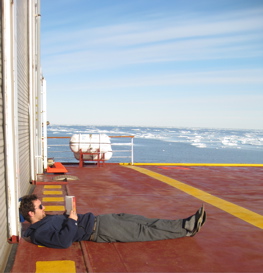
Second Mate Carol Dunfield who has the Bridge watch from midnight to 4AM, reports that the sun dipped below the horizon last night.
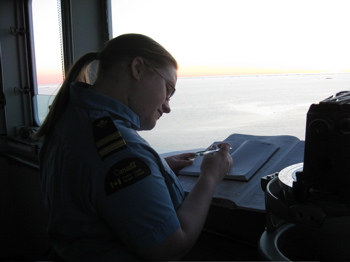
Tonight I will be up from midnight to about 3AM to collect water samples from the Rosette so I will have a great opportunity to see my first Arctic sun set!
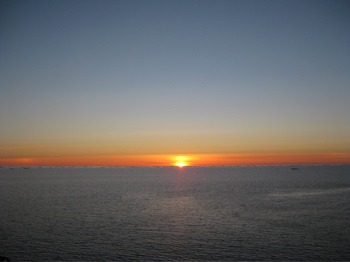
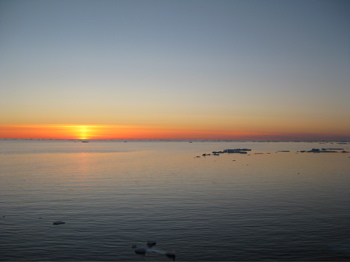
Because the Earth is tilted on its axis, in the Arctic the sun does not appear to "set" in the summer, or "rise" in the winter.
Questions: How many degrees is the tilt? How should you alter this figure to describe conditions at the South Pole?
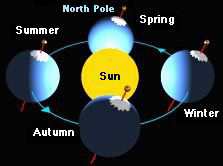
Because we are now traveling south and approaching the end of summer, we are now seeing the sun set, and the time it spends below the horizon will increase each night. The US Naval ObservatoryA location used for observing terrestrial and/or celestial events. will calculate the sun rise and set time for any position on Earth here: http://aa.usno.navy.mil/data/docs/RS_OneYear.php
I have been using a Microtops Sun Photometer to measure solar radiation intensity. These data will be used by NASA in order to verify satellite data. Until today, I have taken very few measurements because we have had so little sun. Here I am taking my 5th set of readings on this beautiful day!
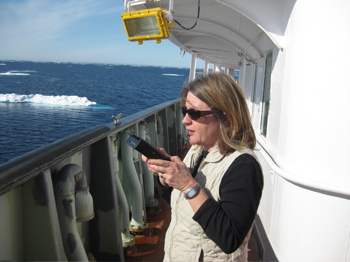
Sun light in the Arctic has an important contribution to the Earth's energy budget. Even though it receives low angle sun for only about half a year, the Arctic plays an important role in reflecting the sun's radiation-- which can be measured as the earth's albedo.
Albedo is a measure of the reflectivity of an object and is expressed as a ratio: albedo coefficient = light reflected / light received.
Ice, for example, has a very high albedo coefficient whereas water has a much lower one. When sunlight shines on ice, most of the solar energy is refected back into the atmosphere. By contrast, when sun light shines on water, much more of its solar energy is absorbed. This absorption raises the temperature of the water which can lead to more ice melting, producing more water which can absorb more solar energy, and so on. (This type of cycle where the result accelerates the process is called a positive feedback loop.) Many scientists believe that the ice-albedo feedback loop will be a major contributor to climate change world-wide. The melting of ice masses in the Arctic could contribute significantly to global sea-level rise, and the addition of that fresh water to the salty oceans could change global ocean circulation patterns. Arctic tundra also stores huge amounts of carbon, which could be released to the atmosphere during a thaw, further enhancing the greenhouse effect and global warming.
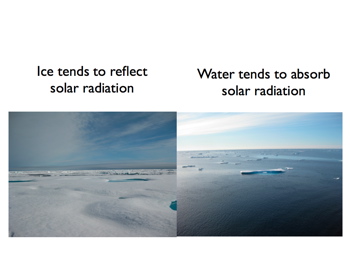
So long, for now, from the sunny Louis!


Comments